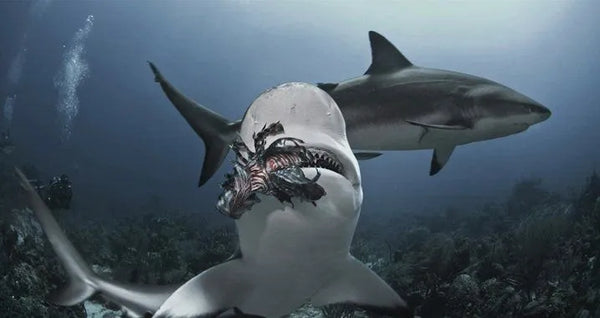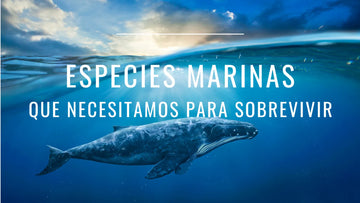We have spoken on several occasions, as in our article "No blue, no green", of the need to keep the oceans alive in order to maintain life on the planet. Simply put, if we lose life in the oceans, we will not be able to survive on land. The trophic chain is subject to different species that maintain a vital balance and their disappearance would be a catastrophe for life.
Today we will go into more detail and show you eight marine species, animals and plants that you may know, but not so much how much we need them:
1.Tuna

Red tuna in the Mediterranean sea. pic by Keith Ellenbogen de Oceana
Tuna has not only fed dozens of civilizations throughout history, it is also a great predator that keeps various marine populations under control. It is a fish that feeds on all types of prey and its existence ensures a healthy balance between the different levels of the food chain. A drastic decline in the tuna population would have a very serious impact on the health of the oceans and directly affect the food supply of hundreds of millions of people around the world.
2. Krill

Krill, Primary food of many whale species
Krill, small shrimp-like organisms measuring 3 to 5 cm, are the food base, especially in the southern oceans, for species that play a major role in the health of the ocean. It is the food of various fish, birds and especially whales, and its disappearance would mean the end of a primordial link in the oceanic food chain.
3. Mangroves

Lemon sharks in a mangrove swamp. Image by Anita Kainrath
Mangroves are forests of saltwater-tolerant trees that stretch for hundreds of kilometers in tropical areas. These forests provide shelter from natural disasters such as hurricanes and tidal waves for thousands of species of birds, crustaceans and fish. Many communities feed on species that breed in mangroves, and they are vital to the local economies of dozens of countries in the tropics.
4. Diatoms

Diatoms magnified 400 times
Diatoms are microscopic single-celled algae that provide about half of the ocean's primary food. With more than 100,000 species, they are the ocean's food base, but they also produce much of the oxygen consumed by living things on Earth.
5. Sharks

The world's oceans and seas are home to 350 species of sharks. As large predators and scavengers, sharks play a vital role in regulating the health of the oceans, preying on the weakest and sickest to ensure the diversity of animal and plant species.
6. Fungi
These organisms have the unique ability to help restore polluted marine areas. Thanks to micro-remediation, fungi decompose and neutralize harmful chemicals such as oil and pesticides that have accumulated in the environment, saving the environmental life of thousands of species.
7. Whales

After centuries of over-exploitation and hunting, whales are now protected and although their population is much smaller than it was 300 years ago, their survival on our planet is not threatened. In addition to being a tourist attraction that generates millions of dollars for local tourism companies, the natural death of whales brings life to the benthic region. Various species and communities living on the sea floor survive thanks to the remains of dead whales.
8. Tunicates

The family of tunicates, or unicordates, consists of 2,800 marine species. Of insignificant appearance, they are animals that adhere to rocks thanks to the secretion of a cellulosic substance called tunicine, which contains potent compounds that fight skin cancers, including melanoma.
Considering that we know only a very small part of the species that the ocean shelters, it is necessary that we conserve marine life, even if only out of selfishness, because of the enormous benefits it provides us.






















